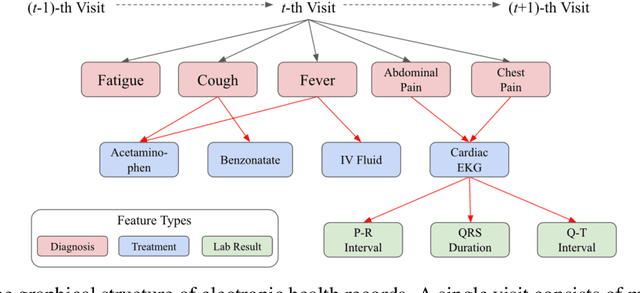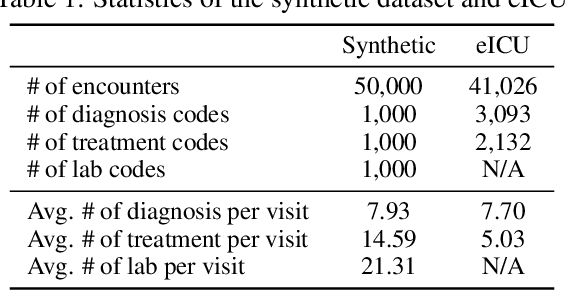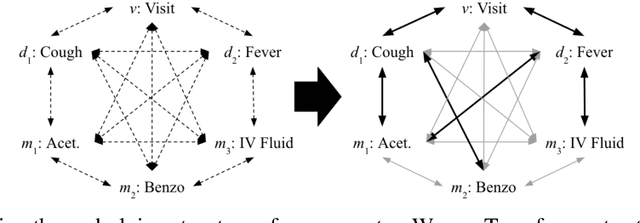Graph Convolutional Transformer: Learning the Graphical Structure of Electronic Health Records
Paper and Code
Jun 28, 2019



Effective modeling of electronic health records (EHR) is rapidly becoming an important topic in both academia and industry. A recent study showed that utilizing the graphical structure underlying EHR data (e.g. relationship between diagnoses and treatments) improves the performance of prediction tasks such as heart failure diagnosis prediction. However, EHR data do not always contain complete structure information. Moreover, when it comes to claims data, structure information is completely unavailable to begin with. Under such circumstances, can we still do better than just treating EHR data as a flat-structured bag-of-features? In this paper, we study the possibility of utilizing the implicit structure of EHR by using the Transformer for prediction tasks on EHR data. Specifically, we argue that the Transformer is a suitable model to learn the hidden EHR structure, and propose the Graph Convolutional Transformer, which uses data statistics to guide the structure learning process. Our model empirically demonstrated superior prediction performance to previous approaches on both synthetic data and publicly available EHR data on encounter-based prediction tasks such as graph reconstruction and readmission prediction, indicating that it can serve as an effective general-purpose representation learning algorithm for EHR data.
 Add to Chrome
Add to Chrome Add to Firefox
Add to Firefox Add to Edge
Add to Edge